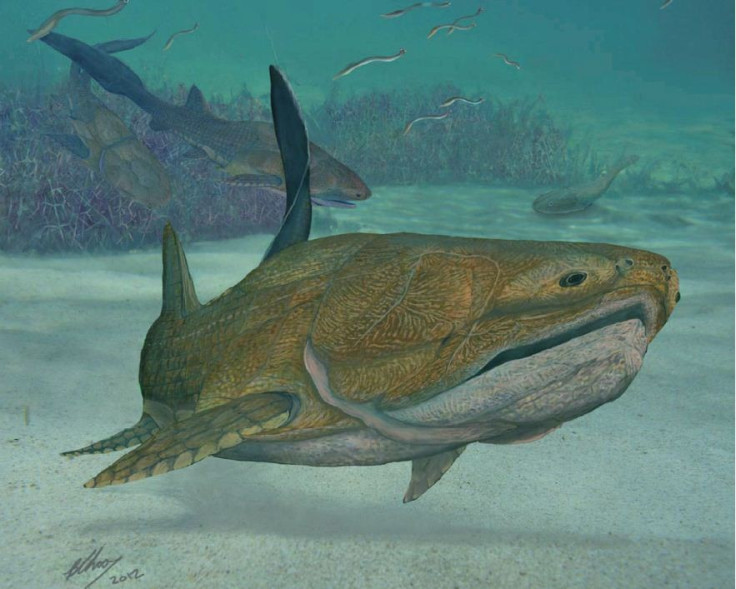Prehistoric Fish with Human-like Face Found in China

Scientists have found what could be the earliest recognized creature with human-like facial features.
A 419-million-year old fish, found in Quijing prefecture in eastern Yunnan province of southwest China, possesses dermal marginal jaw bones, a feature found in modern bony fishes and other back boned creatures including humans, reveals a study published in the 25 September issue of journal, Nature.
According to scientists, the well-preserved fossil of the fish, called Entelognathus primordialis, belonged to placoderms.
Placoderms were the first jawed fish in the history of evolution that lived during Silurian period from about 430 million to 360 million years ago in a region that is now part of China. These jawed creatures had a bony skull and jaw similar to that of a shark.
The theory of evolution suggests that bony fish, from which humans evolved, developed independently later.
"The theory went that the bony fishes evolved later, independently developing large facial bones and inventing the 'modern' jaw. Such fishes went on to dominate the seas and ultimately gave rise to land vertebrates," Eliot Barford of the Nature News reports.
The new find contradicts the theory and scientists believe that Entelognathus could be the missing link between the last common ancestor of modern bony fish and that of the placoderms.
"It has what looks like a bony fish's jaw, even though it is older than the earliest known sharks and bony fishes," Min Zhu, one of the scientists of the study team, said.
The study team added: "There is a serious possibility that the modern bony visage originated with E. primordialis's ancestors. This would mean that humans look more like the last common ancestor of living jawed vertebrates than we thought, and that sharks are less primitive than palaeontologists assumed."
However, scientists maintained that the study does not fully establish if humans actually inherited their jaw from placoderms or it is a mere resemblance.
© Copyright IBTimes 2025. All rights reserved.






















